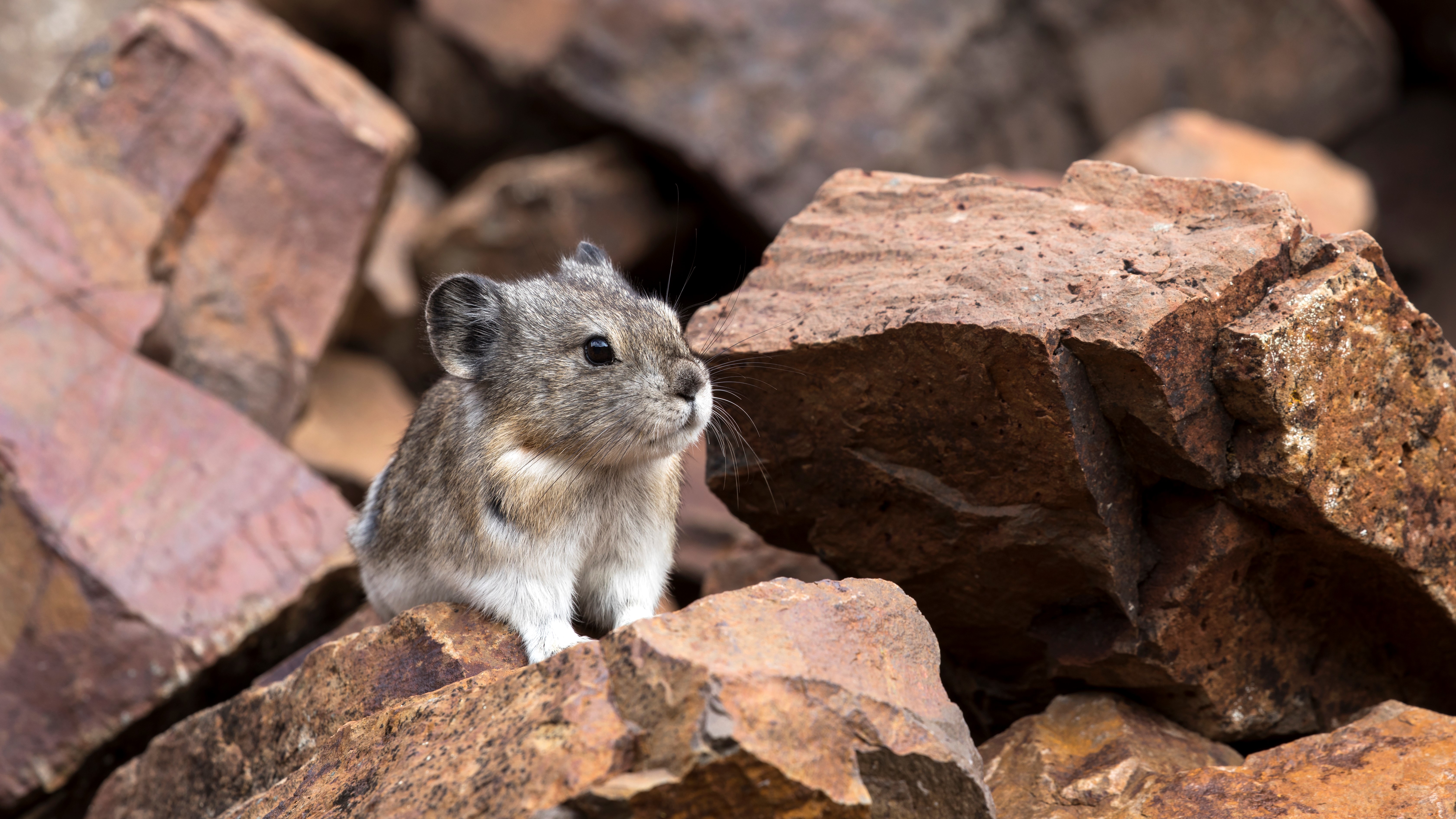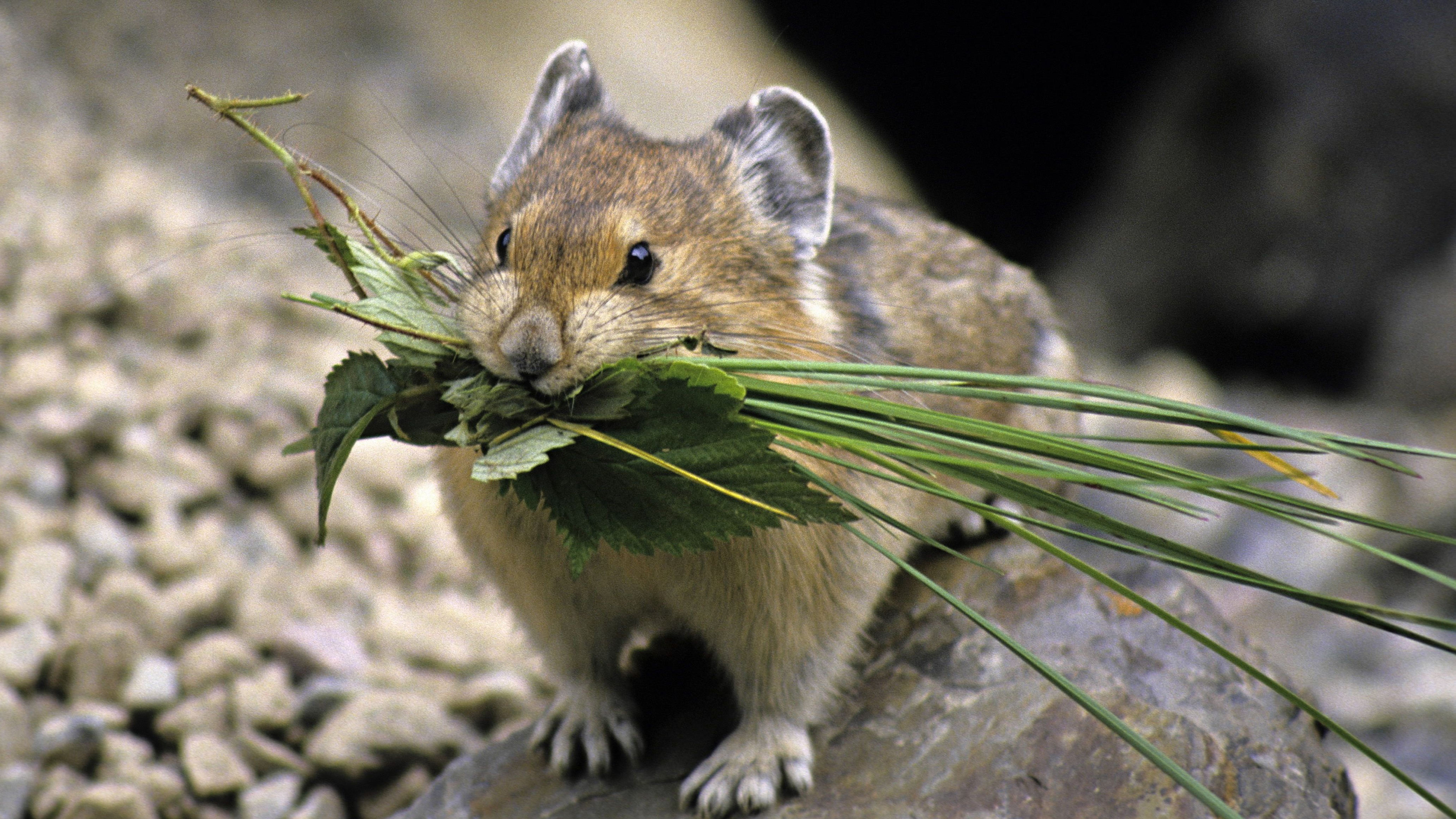What is a pika? Meet the adorable gatekeepers of the high country
Pikas are a cute and cuddly presence in North America’s alpine areas, but they’re also some of the toughest beasts on the mountain

Hiking a 14er nearly always delivers a certain ecological transition. Though some have trailheads that start above treeline, most start lower, with a winding path through a forest. Then at a certain point, the trees begin to give way and that soft forest floor is replaced by boulder fields and talus that shifts under foot. The temperature drops noticeably, and even on the hottest summer days, you might stop to pull out a base layer or a waterproof jacket to fend off the wind. Your fingers might start to swell and without the call of the birds or rushing streams, an intense quiet falls, especially on a still day.
Then suddenly, there’s a shrill, impossibly high-pitched “eeep!” to break through the hush. The sound of a pika alerting its neighbors to your presence is like a welcome call to the high country, something you’ll never hear if you don’t venture up peaks, and for many alpine hikers, a sign that the summit is near.
On a good day, you’ll hear a few of these distinctive chirps while above treeline and if you’re lucky, even set eyes on one of these cuddly-looking creatures as it scurries over the rocks with a mouthful of grass or pokes its head out from a pile of rocks. It’s much smaller than its alpine neighbor, the marmot, and its call is far more piercing, but who are these gatekeepers of high altitude?

What is a pika?
American pikas are small, round animals that appear a bit like a large mouse, with gray-brown fur, giant ears and no visible tail. However, despite appearances, they aren’t rodents at all; rather, pikas are a member of the lagomorph family and their closest relatives are actually rabbits.
There are only two species of pika in North America, with the remaining 27 species found in central Asia. American pikas tend to reside in mountainous, high altitude areas in the Rocky Mountains and further west. They are rock dwellers, living in dens in the spaces within piles of talus, which is one reason why it’s so important not to disturb this terrain with your hiking boots and to stick to the trail when one is available. Pikas live in well-spaced territories and communicate with their neighbors largely using their penetrating “eeep” call, which they also use to alert each other of predators.
If you’re hiking a 14er in the fall, you’re likely to see pikas scampering around with blades of grass and wildflowers in their mouth. Many hikers assume they are building a nest for winter, but remember, they live in rock dens. What they’re actually doing is stocking the pantry for the long winter ahead. Believe it or not, pikas aren’t hibernators like their larger mountain friends, bears. These cute-looking animals actually tough out the alpine winter, facing months of sub-zero temperatures and deep snow covering their food source, so they stock up on grub ahead of time.

Can you pet a pika?
You should definitely not try to pet a pika, even though they are adorable. You’ll no doubt hear a pika before you see it, but if you’re lucky enough to see a pika, you should stop, keep your distance and simply enjoy it from afar. Bring your binoculars if you want to get close to them.
Advnture Newsletter
All the latest inspiration, tips and guides to help you plan your next Advnture!
Please don't try to feed pikas (and please don’t feed any wildlife, for that matter) as eating human food is bad for them. Avoid disturbing talus, where they live, and do your part to keep your carbon footprint down in all areas of your life, since rising temperatures are spoiling the habitats of some pikas that have historically resided in places like Oregon and Nevada. If we all work together then we can continue to enjoy the welcoming chorus call of pikas when we venture into the high country.
Julia Clarke is a staff writer for Advnture.com and the author of the book Restorative Yoga for Beginners. She loves to explore mountains on foot, bike, skis and belay and then recover on the the yoga mat. Julia graduated with a degree in journalism in 2004 and spent eight years working as a radio presenter in Kansas City, Vermont, Boston and New York City before discovering the joys of the Rocky Mountains. She then detoured west to Colorado and enjoyed 11 years teaching yoga in Vail before returning to her hometown of Glasgow, Scotland in 2020 to focus on family and writing.

